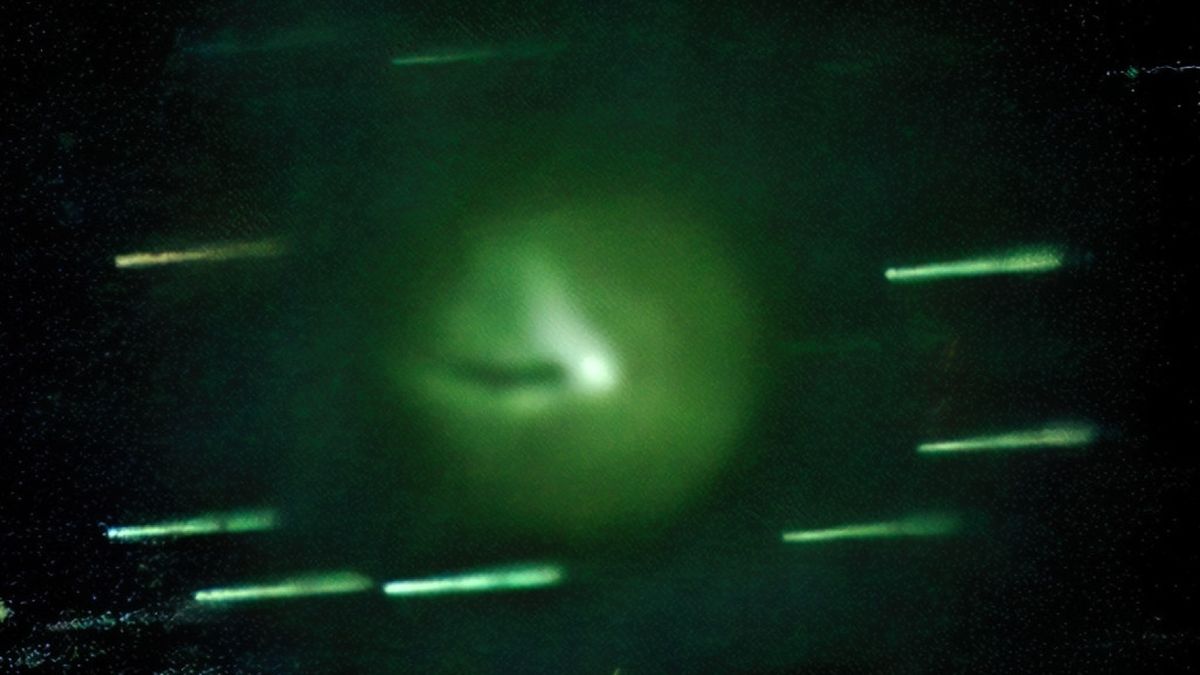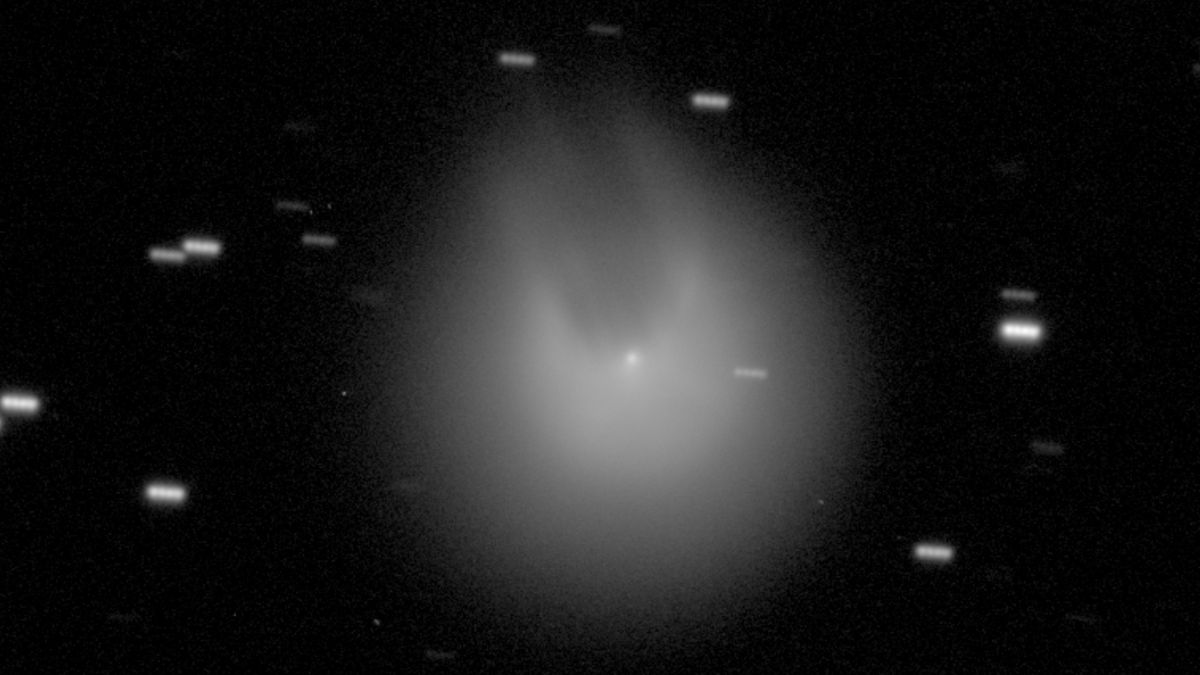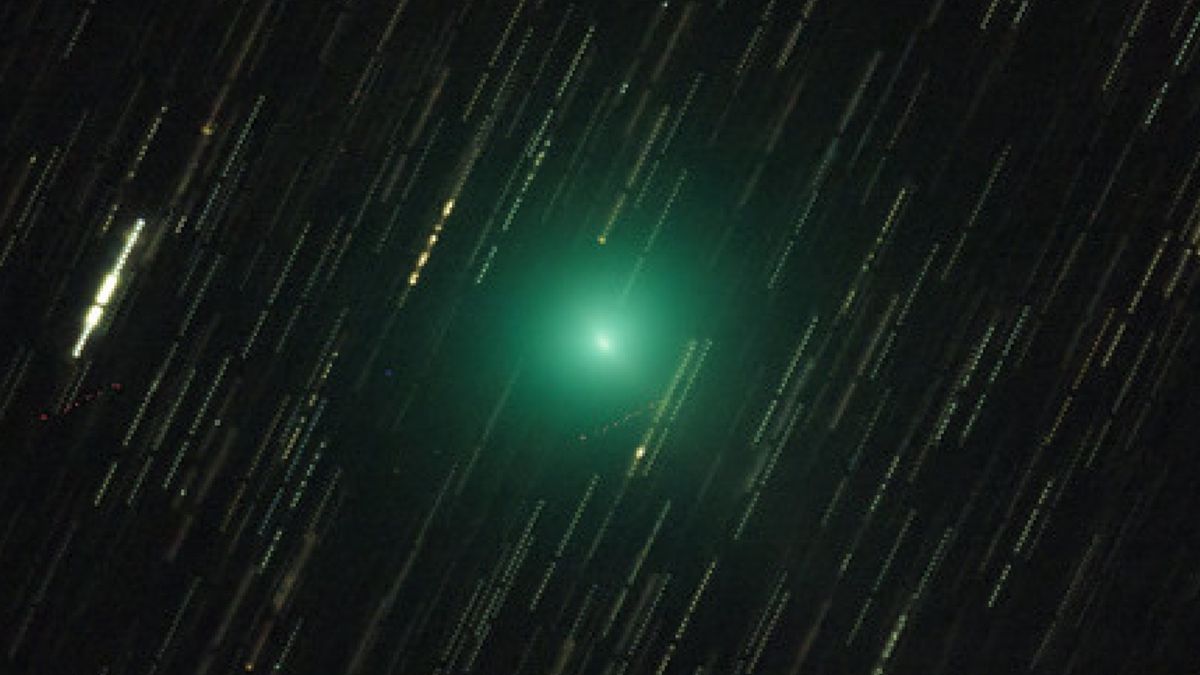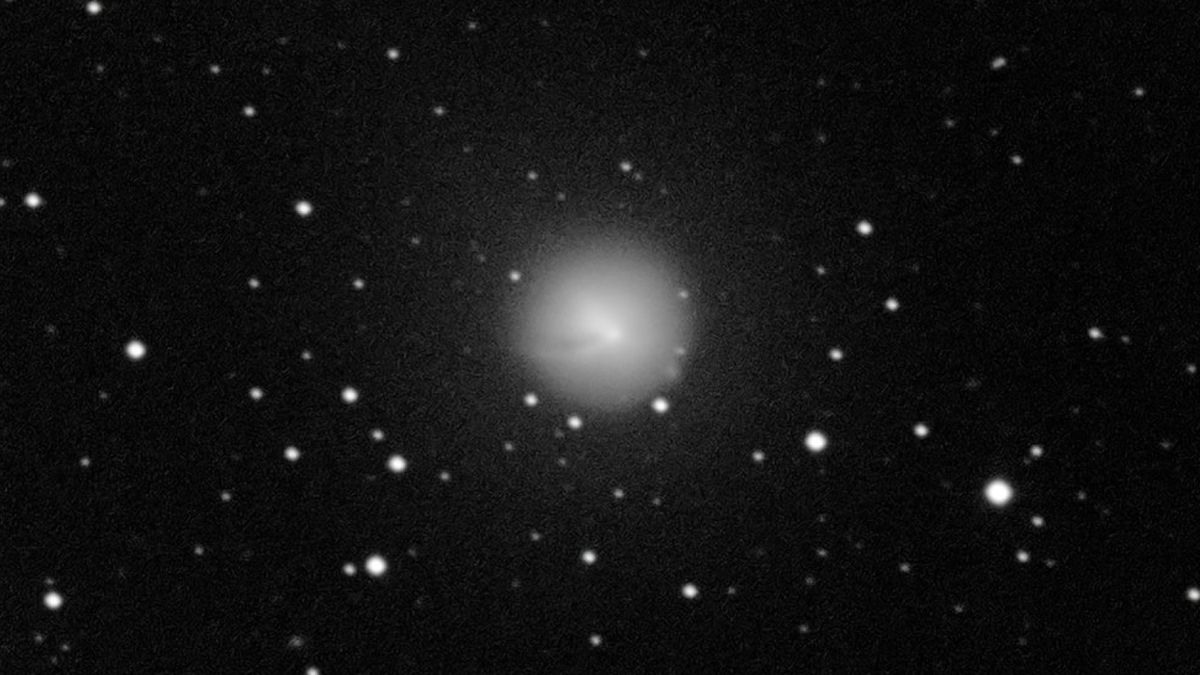City-size 'devil comet' headed for Earth loses its iconic horns and turns green after latest volcanic eruption
The latest eruption of the cryovolcanic comet 12P/Pons-Brooks, which will make its closest approach to Earth next year, shows that the icy object may have lost its iconic devil horns for good.

The massive volcanic "devil comet," that is racing toward the sun may have lost the distinctive horns that earned it its sinister nickname. Last week, after the comet's latest and most violent outburst yet, its trademark head spikes did not appear as they did after previous eruptions. But astronomers have spotted several new characteristics of the comet, including a rare green hue and a mysterious "shadow."
Comet 12P/Pons-Brooks (12P), is a massive 10.5-mile-wide (17 kilometer) comet that is on course to make its closest approach to Earth for more than 70 years next summer. Comet 12P is a cryovolcanic, or cold volcano, comet that consists of an icy shell, or nucleus, filled with ice and gas. When the comet soaks up enough of the sun's radiation, its frosty innards, or cryomagma, get superheated. Pressure builds up within the nucleus until the shell cracks and the comet's icy guts spray into space. After an eruption, the comet's coma — a fuzzy, reflective cloud of cryomagma and dust — expands and makes the comet appear much brighter to astronomers as it reflects the sun's rays.
So far, 12P has had three major eruptions: On July 20, when it was spotted exploding for the first time in 69 years; on Oct. 5, when it erupted even more vigorously; and on Halloween (Oct. 31), which was a less intense outburst. Each time the comet blew its top, its coma expanded into an irregular shape with a "dark lane" that made it appear to have grown a pair of horns.
On Nov. 14, 12P experienced another major eruption — the most extreme outburst so far. Astronomers watched as the comet temporarily became more than 100 times brighter than normal in the following days as its coma expanded, Spaceweather.com reported. But this time, its distinctive horns were nowhere to be seen.
"The coma seems perfectly circular this time," Nick James, director of the British Astronomical Associations's (BAA) comet section, told Spaceweather.com.
Related: Comets that 'bounce' from planet to planet could spread life across the universe
The comet's horns are the result of an irregularity in the shape of 12P's nucleus, BAA astronomer Richard Miles previously told Live Science. The outflowing gas is likely being partially obstructed by a notch sticking out on the nucleus, he said.
Breaking space news, the latest updates on rocket launches, skywatching events and more!
It is currently unclear why the horns have disappeared. But the frequent eruptions may have destroyed the notch that was blocking the outflow of cryomagma. During the third eruption on Halloween, the horns were much less distinct that they were in the first two eruptions, which suggests that notch may have already been damaged after the comet's first two outbursts.
Amateur astronomer and photographer Eliot Herman, who has been taking daily photos of the comet since its first eruption, told Live Science that he was surprised when the coma expanded without sprouting its horns and is unsure if they will make another appearance in the future. "The devil may be gone [for good]," he said.
Herman's images also revealed another surprise — a green hue in the comet's coma. This rare coloration is given off by comets with high levels of dicarbon, a chemical that emits green light when broken down by sunlight, according to Science magazine.
Several green comets have flown by Earth this year, including the "green comet" C/2022 E3 (ZTF), which made its closest approach to Earth for 50,000 years in February, and Comet Nishimura, which flew by our planet for the first time in 430 years in September.
In follow-up images of the comet, Herman also noticed another strange dark patch in the comet's colorful coma, which looks like a curved gap. But unlike the misshaped dark lane that previously gave the coma its horns, experts believe that this unusual shape is a shadow cast by the outflowing cryomagma, according to Spaceweather.com.
12P is currently speeding toward the sun at around 40,000 mph (64,300 km/h) as it nears the end of its 71-year orbit around the sun.
On April 24, 2024, the comet will reach its closest point to the sun, or perihelion, before being slingshotted around our home star and into the outer solar system where it spends a majority of its orbit. It likely won't return to the inner solar system until 2094.
12P will make its closest approach to Earth on June 2 next year, when it will hopefully be visible to the naked eye.

Harry is a U.K.-based staff writer at Live Science. He studied Marine Biology at the University of Exeter (Penryn campus) and after graduating started his own blog site "Marine Madness," which he continues to run with other ocean enthusiasts. He is also interested in evolution, climate change, robots, space exploration, environmental conservation and anything that's been fossilized. When not at work he can be found watching sci-fi films, playing old Pokemon games or running (probably slower than he'd like).



